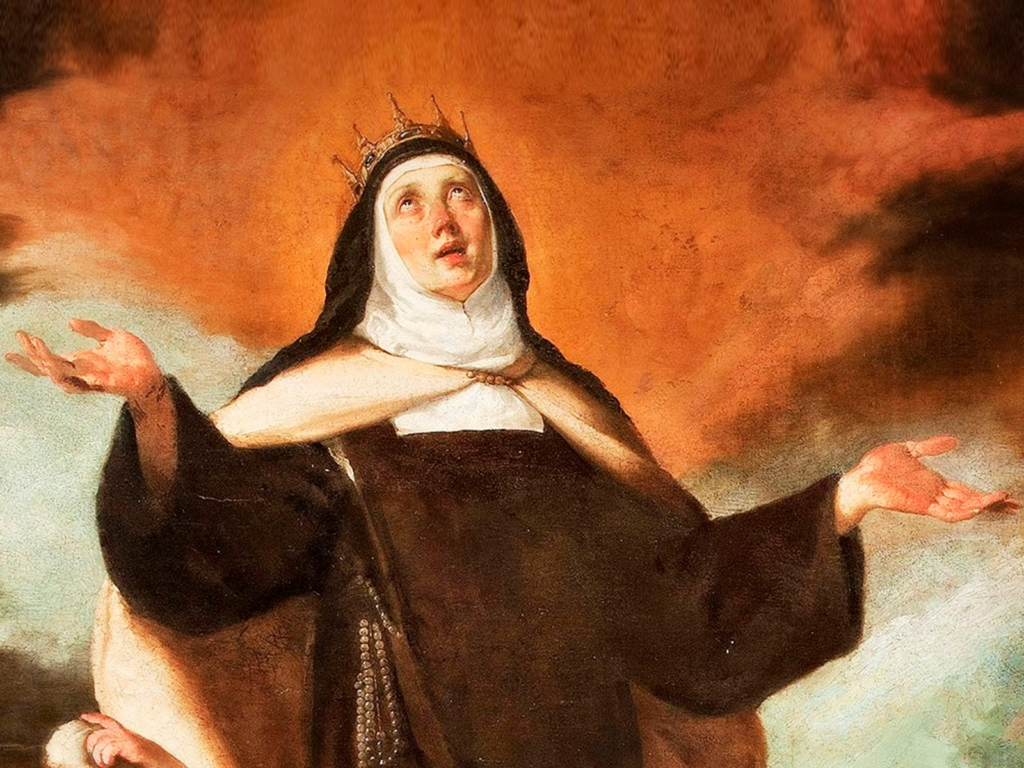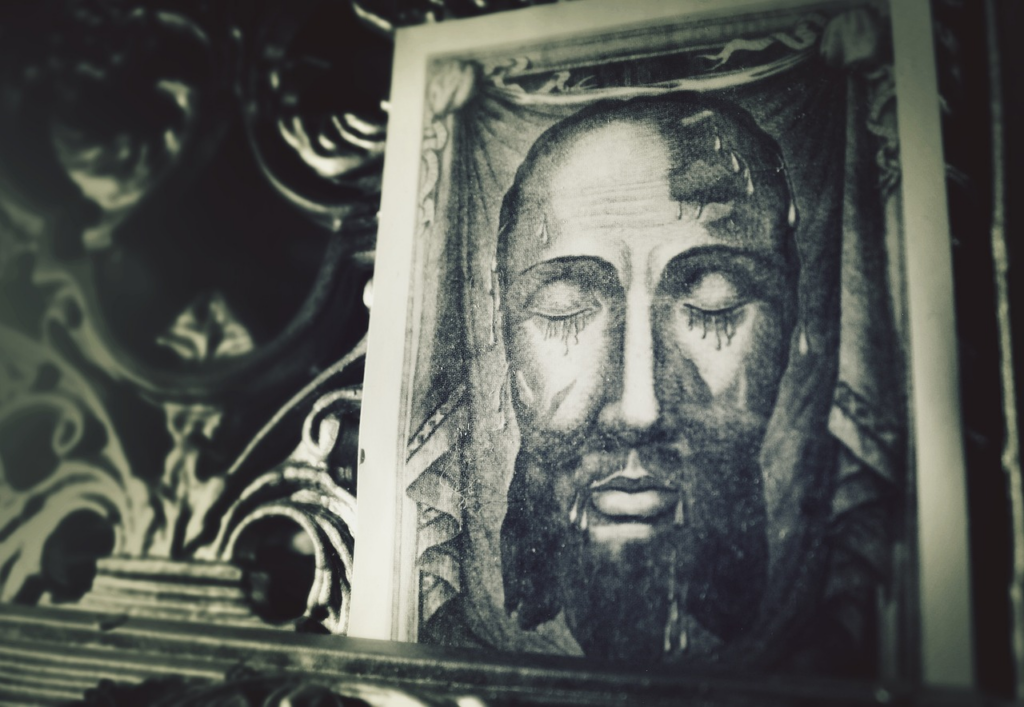Advertisement
Saints play a significant role in various religious traditions around the world. With their inspiring stories and legacies, they are venerated and celebrated by millions of people. But have you ever wondered what all the saints' names are?
What are the names of all the saints?
From ancient times to the present day, saints have played a fundamental role in religions and in the lives of millions of people around the world. Their names are revered, invoked in prayers and celebrated in religious festivities.
Advertisement
1. Saint Francis of Assisi
St. Francis of Assisi is an iconic figure who transcends time and continues to inspire people from all walks of life. Born at the end of the 12th century in Assisi, Italy, Francis began his life as a young nobleman who enjoyed the worldly pleasures typical of his social position. However, his life took a radical turn when he had a transformative encounter with Christ and embraced a life of simplicity, poverty and service to the less fortunate.
One of St. Francis' most striking characteristics was his deep connection with nature. He saw all creatures as sisters and brothers, and his famous "Canticle of the Creatures" reflects this holistic view of the world as a sacred place, where all forms of life are interconnected and deserve respect and care. This reverence for divine creation made St. Francis the patron saint of animals and the environment, a title that resonates powerfully to this day, in light of contemporary concerns about the climate crisis and environmental degradation.
Advertisement
In addition to his love of nature, St. Francis is also remembered for founding the Franciscan Order, a movement that challenged the social norms of the time by opting for poverty and service to the poor rather than seeking wealth and status. He preached the gospel of humility and compassion, living among the marginalized and seeking peace in a time marked by conflict and division.
The life of St. Francis is full of legendary stories and episodes that illustrate his radical devotion to Christ and his commitment to the values of the Gospel. His stigmatization, where he received Christ's wounds on his own body, is one of the most well-known and revered events in his life, symbolizing his deep union with Christ's suffering and his sacrificial love for humanity.
2. Saint Teresa of Avila
St. Teresa of Avila, also known as St. Teresa of Jesus, is one of the most prominent figures in Christian spirituality, especially in the context of mysticism and contemplative life. Born in 1515 in Spain, Teresa grew up in a devout family and showed a deep inclination towards religious life from an early age.

Her spiritual journey was marked by an intense search for union with God. Teresa described her mystical experiences in her works, such as "The Book of Life" and "The Way of Perfection", where she shared her insights into contemplative prayer and the interior life. Her writing reveals a deep intimacy with God and a penetrating understanding of the stages of spiritual development.
One of St. Teresa's most significant contributions to Christian spirituality was the development of the prayer method known as the "Prayer of Recollection", or "Prayer of the Heart". This method emphasizes the importance of inner stillness and concentration of the mind in order to achieve a deeper communion with God. Teresa described this form of prayer as a "plunge into the divine presence", where the soul enters into intimate union with the Creator.
In addition to her profound interior life, St. Teresa also had a significant impact on the religious life of her time. She was a reformer of the Carmelite Order, seeking to restore strict observance of the order's original rule and to promote a more contemplative and austere lifestyle among her Carmelite brothers and sisters.
In 1970, St. Teresa of Avila was proclaimed a Doctor of the Church by Pope Paul VI, in recognition of her profound understanding of the mysteries of the faith and her lasting contribution to spiritual theology. Her influence transcended borders and continents, inspiring countless people throughout the centuries to seek a life of prayer, contemplation and union with God.
3. St. John Paul II
St. John Paul II, born Karol Józef Wojtyła in 1920 in Poland, was one of the most remarkable leaders of the Catholic Church in the 20th century. He emerged as a charismatic and influential figure, whose pontificate of almost 27 years left a lasting legacy not only in the church, but also in the world at large.
A remarkable aspect of St. John Paul II's life and pontificate was his personal experience of the horrors of the Second World War and the communist regime that followed in Poland. These experiences profoundly shaped his worldview and his understanding of human dignity. As a Church leader, he became a tireless defender of human rights and religious freedom, standing up to oppressive regimes and defending the oppressed around the world.
In addition to his commitment to human rights, St. John Paul II was also a visionary leader who challenged the church to engage with the modern world in a relevant and meaningful way. He traveled more than any other pope in history, visiting more than 130 countries and meeting religious, political and cultural leaders from all walks of life. His papal travels have not only strengthened the church's ties with communities around the world, but have also served as a powerful symbol of global unity and solidarity.
4. St. Therese of Lisieux
St. Therese of Lisieux, also known as St. Therese of the Child Jesus and the Holy Face, was a French Carmelite nun from the late 19th century whose apparently ordinary life was transformed into an extraordinary one by the depth of her devotion and simplicity of heart.
Born Marie-Françoise-Thérèse Martin in 1873, Teresa entered the Carmel of Lisieux when she was just 15 years old. Despite her short life and the apparent simplicity of her daily activities in the convent, she developed a deep spirituality that achieved worldwide fame after her early death at the age of 24.
One of the most striking features of St. Thérèse of Lisieux's spirituality was her "little way", an approach of simplicity and childlike trust in God's mercy. She proposed a spirituality accessible to everyone, regardless of their intellectual capacity or religious practice, emphasizing that even the simplest, everyday actions can be offered to God with love and sacrifice.
St. Teresa's autobiographical book, "Story of a Soul", reveals the details of her inner life and her spiritual journey. In it, she describes her struggle to become a saint and her desire to offer herself completely to God's love. Her simple and sincere words resonate with many devotees around the world, inspiring them to find God in the midst of the ordinary tasks of daily life.
In addition to her spirituality of littleness, St. Thérèse of Lisieux is remembered for her deep devotion to the Child Jesus and the Holy Face. She believed that by contemplating Jesus' innocence and vulnerability in infancy, she could find a path of total trust and abandonment into God's hands.
5. St. Peter's
Saint Peter is a central figure in Christianity, recognized as one of the twelve apostles chosen by Jesus Christ to lead his Church. His role and influence are so significant that he is often considered the first pope by Catholic tradition.
Peter, whose original name was Simon, was a fisherman in Galilee when he was called by Jesus to become one of his disciples. Throughout Jesus' ministry, Peter emerged as a leader among the apostles, often acting as a spokesman for the group and showing an ardent devotion to the Master.
One of the most emblematic passages in Peter's life is his confession of faith in Caesarea Philippi, where he recognized Jesus as the Christ, the Son of the living God. Jesus responded by proclaiming that on this confession he would build his Church, giving Peter a prominent role in the foundation and leadership of the Christian community.
Despite his fervent faith, Peter is also known for his weaknesses and failings. He denied Jesus three times during Jesus' arrest, fulfilling Christ's prophecy. However, after Jesus' resurrection, Peter was restored and commissioned by Jesus to feed his sheep, a gesture of forgiveness and trust that highlights divine mercy and grace.
6. Saint Rita of Cascia
St. Rita of Cascia, also known as St. Rita of Roccaporena, is one of the most popular and venerated saints in the Catholic tradition. She lived in the 14th century, at a time marked by conflicts, tragedies and personal and social challenges.
Born Margherita Lotti in 1381 in Roccaporena, Italy, Saint Rita faced a number of difficulties throughout her life. From an early age, she showed a deep devotion to God and a burning desire to consecrate her life to Him. However, against her parents' wishes, she was forced to marry a violent and unstable man.
Despite the difficulties in her marriage, St. Rita persevered in her faith and her devotion to God. She was an example of patience, forgiveness and love, enduring the tribulations of her family life with grace and resignation. Her witness of faith and her life of prayer inspired many around her, including her husband, who eventually converted and reconciled with her before his death.
After the death of her husband and children, St. Rita entered the Augustinian convent in Cascia, where she lived out the rest of her days in prayer and penance. There, she experienced mystical visions and received the stigma of Christ's crown of thorns, a sign of her intimate union with Jesus' suffering.
7. St. George
St. George is a legendary figure venerated in various religious traditions around the world, especially in the Catholic Church and the Orthodox Church. He is often portrayed as a brave and fearless warrior, fighting evil and defending the faithful in times of adversity.
Although much of what is known about St. George is based on legends and traditions, his devotion and popularity have endured through the centuries. He is considered one of the fourteen auxiliary saints, a group of saints invoked in times of need and distress.
The best-known story about St. George is his fight against a ferocious dragon to save a city and a princess. According to the legend, the city of Silene was being terrorized by a dragon that demanded human sacrifices. When it was the princess's turn to be sacrificed, St. George confronted the dragon, killing it with the help of his faith in God. This symbolic story is often interpreted as the victory of good over evil and the importance of courage and faith in times of adversity.
In addition to his association with the legend of the dragon, St. George is venerated as a Christian martyr who faced persecution and martyrdom for his faith. He is traditionally depicted wearing armor and holding a spear, symbols of his willingness to fight for the truth and defend the Christian faith.
8. Saint Catherine of Siena
St. Catherine of Siena is one of the most fascinating and influential figures in medieval Christianity. Born in 1347 in Siena, Italy, Catherine demonstrated from an early age a deep religious devotion and an intimate connection with God that would shape the course of her life and her lasting influence on the history of the church.
Catherine is best known for her mystical experiences and her active participation in the religious and political affairs of her time. She claimed to have received divine visions since childhood, including visions of Christ, the Virgin Mary and the saints. These mystical experiences not only nourished her inner life, but also pushed her to take an active role in the life of the church and society.

One of St. Catherine's most significant contributions was her ability as a counselor and mediator. She wrote countless letters to the ecclesiastical and political authorities of her day, advising and exhorting them to seek peace and justice, as well as church reform. Her influence was so great that she was called upon to intervene in disputes and conflicts throughout Italy and beyond.
In addition to her role as a counselor, Saint Catherine is also recognized for her theological contributions. Her works, including "The Dialogue" and a collection of letters and writings, reveal a brilliant mind and a deep understanding of the mysteries of faith. She is especially remembered for her emphasis on the importance of divine love and love of neighbor as the foundations of Christian life.
Faith in the saints
These are just a few of the many saints venerated in various religious traditions around the world. Their names resonate through the centuries, inspiring the faithful and offering examples of devotion, courage and love. Regardless of their religion or belief, the lives and teachings of these saints continue to be sources of inspiration and admiration for many. May we learn from their examples and seek to live lives of kindness, compassion and faith.
See also: The Importance of Spirituality in the Digital Age: How Technology Affects Our Religious Practice
March 30th, 2024

She has a degree in Languages - Portuguese/English, and is the creator of the Escritora de Sucesso website. As a writer, she seeks to expand everyone's knowledge with relevant information on various subjects. At SoMuchToSayToday, she brings news and content ranging from entertainment to the country's economic situation.



